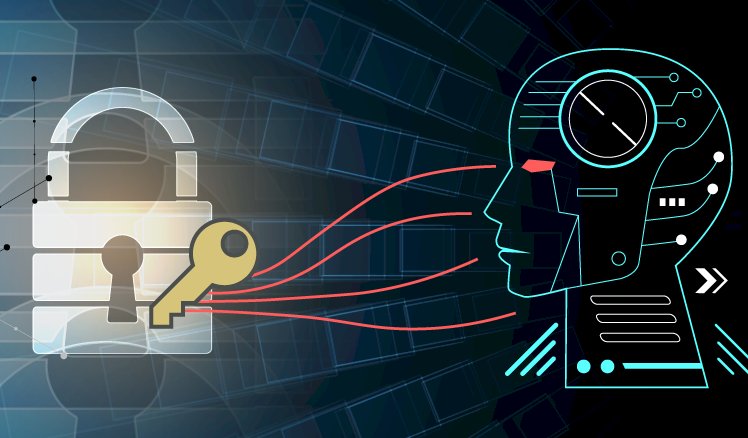How Artificial Intelligence Is Changing The Cybersecurity Landscape?
The rapidly accelerating digitization due to the pandemic has brought many benefits, such as better business readiness and customer experience. But there were also negative effects, such as an additional vulnerability to cybersecurity threats to your data and applications.
By blogwriternisha

A cyber attack is a malicious and intentional attempt to attack a person's computer or information systems, disrupting the victim's personal network.
One of the biggest concerns regarding the development of artificial intelligence is the likelihood that attackers will assemble AI and use it to spread and stimulate cyberattacks. Cybercrime and the cybersecurity landscape are changing rapidly, and stimulating the development of AI to enhance cybersecurity will be a major shift in protecting against cyber attacks.
Let's look at some of the ways AI is changing the cybersecurity landscape.
Cyber threat detection
Machine learning (ML), a subset of artificial intelligence, enables real-time detection of cyber threats based on analysis of comprehensive organizational data. Machine learning algorithms are constantly updated and updated to identify threats to your system before exploiting your vulnerabilities. These algorithms understand all aspects of an organization's infrastructure and network and possible attack scenarios.
By learning, analyzing data, and understanding patterns of behavior, algorithms can detect anomalies in the system and detect them before attacking.
With constant training and updates, machine learning algorithms will improve in terms of predicting and eliminating cyber threats.
Using AI and ML algorithms, user activity and behavior on devices and web platforms can be analyzed to understand their behavior patterns. Any misconduct or unusual activity will be immediately reported as suspicious.
The algorithms require user models such as employee working hours, a geographic location used for network authentication, device IDs, print or movement patterns on those devices, and more.

After setting a standard for normal user behavior or network traffic for your business, algorithms can detect activities that do not follow this common pattern and take further action.
Fraud detection
Traditional fraud detection techniques are based on predefined rules, which can generate a large number of false results, blocking real transactions and increasing the possibility of losing customers. Machine learning algorithms are used to enhance this process with their ability to scan large amounts of transactional data and individual models.
With the benefits of enhanced anomaly detection, artificial intelligence is helping businesses and financial institutions build a credible reputation and improve customer relationships.
Identity and access management
Passwords are a vulnerable method of security and are often the only barrier between hackers and user accounts. When it comes to setting and updating passwords, most people tend to use the same passwords on different accounts, use the same passwords for many years, keep their passwords in a notebook on their computer, and so on. . cybercriminals to access our various accounts.
Although biometric authentication has been introduced as an alternative to weak passwords, cybercriminals have found a way to test this system. Artificial intelligence algorithms are being developed to enhance biometric authentication.
To prevent suspicious access, artificial intelligence algorithms model the user's face and identify key patterns and correlations. The algorithm will also work when users are in low light areas or with accessories like hats, making it a much better and safer method of protecting their accounts.
Malware detection
Malware is malicious software that includes viruses, Trojans, ransomware, and spyware. Email is usually sent in the form of a link or file and is designed to do great damage to your organization's data and systems.
The traditional ML approach used function engineering to analyze and remove malware program functions and to compare them with the default group to find out which program is malicious. But this method does not take into account variable types of malware.
Deep-learning algorithms and complex neural networks are being developed to counter these increasingly sophisticated malware threats. These algorithms will analyze and compare the dynamic features of a malware program with its static features to identify anomalies and block malware.
Vulnerability management
As the complexity of networking increases, artificial intelligence can reduce the increasing burden on enterprise vulnerability management operations with its combination of intelligent decision-making and automation.
AI can help develop context-based vulnerability risk outcomes by proactively identifying vulnerabilities and using emotional analysis to understand vulnerability exploitation trends. This would greatly reduce the human effort required to assess risks and actively protect vulnerable assets.
Last thoughts
In addition to the listed domains, artificial intelligence can also be used in endpoint protection, security recommendations, spambots, and many other areas. Promoting artificial intelligence solutions is helping both sides of cyberspace: attackers and defenders.
As AI continues to develop, organizations need to continually update their cybersecurity tools and processes to proactively prevent threats and protect their systems and data. Choosing the right technology and creating robust security procedures will help you avoid crises and stay one step ahead of your potential attackers.
What's Your Reaction?



















